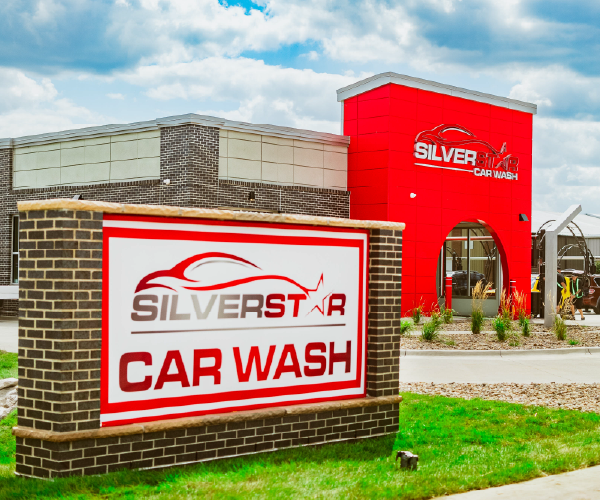
Growth Spurt
October 1, 2012
7 minute ReadKnowing When the Time Is Right
Independent carwash operators typically spend the early years of their businesses building a strong customer base, developing the company’s culture, perfecting employee protocols, and, as quickly as possible, moving out of the red. Once a carwash does become profitable, however, owners quickly find their focus shifting. No longer are they consumed by the daunting task of keeping a new operation afloat; now, they have to figure out how to grow their business — and navigating these ever-changing waters is not as easy as it sounds.
It’s a fact: in business, success brings change. For instance, as a carwash grows its customer base, it also needs to hire new employees to meet those new customers’ needs. Otherwise, the staff will become overworked, customer service will suffer, and those new customers will take their cars to the competitors. And increasing the headcount is just one of the challenges a successful owner faces. Eventually, they’ll have to consider tweaking operation systems, implementing new technology, and hiring a marketing firm.
Can You Grow too Fast?
According to Joel Spolsky, CEO of Fog Creek Software and author of the article “The Four Pillars of Organic Growth” published on Inc.com, there are four areas of business growth that should develop at about the same pace: “revenue, head count, PR, and quality.” If one of these moves at a faster rate than the other, the consequence can range from a temporary dip of revenue to losing a company all together. That’s what happened to 180, a Baltimore-based sports apparel company that experienced phenomenal growth in the late 90’s and early 2000s.
John Anderson, author of an Inc. article about the company’s rise and fall, reports that between 1999 and 2002, the company’s revenues skyrocketed from $1 million to $15.2 million. During each of these years, the staff also nearly doubled. Fueled by the sales of an early hit product, ear warmers worn on the back of the head, the company tried to recreate their initial success with other innovations — sunglasses, beach chairs that transformed into backpacks, running jackets with cooling vents — but none of these had the appeal of the ear warmers.
To finance the development of these fledgling products and the continued production of the ear warmers, 180 sought huge cash infusions from investors. In 2004, the company took out a $20 million line of credit, but within a year, it needed more money. This time it reached out to the private equity firm, Patriarch Partners. A few months later, Brian Le Gette, the CEO and co-founder, lost control and Patriarch Partners became the new owners.
What was 180’s mistake? The quality of the company’s products had not risen at the same rate as its revenue and headcount. In a mad attempt to keep up with its early success, the company sacrificed product quality and, as a result, lost repeat customers and their sales. According to Anderson, Le Gette admits that he “I should have tapped the brakes sooner.” If he had, perhaps 180 would still be around today.
When Should You Hire?
One sign of growth is the need to hire more. While no owner looks forward to the added expense which comes with new employees, sometimes it’s a necessity. Growing businesses (especially service-oriented ones such as carwashes) need to periodically increase the headcount in order to meet the needs of a swelling customer base. According to Joel Spolsky, if owners resist this change, they will end up with overworked and demoralized employees. And ultimately, this will cost owners in higher turnover rates and revenue losses caused by poor customer service.
With a larger staff, however, comes its own set of challenges. For example, a company’s values, which may have driven its initial success, are often forgotten as the payroll grows from a few employees to dozens. To hold on to a company’s original spirit, owners need to find innovative ways to keep these values relevant to the entire staff. Stuart McDonald, Chief Marketing and Revenue Officer at the cloud accounting firm FreshBooks, shares his company’s solution on the Entrepreneur website: “We’ve taken a unique approach to keep the small company dynamic. Everyone (executive management included) rotates through customer support. A customer might get the CEO one day or a developer the next day. We take this unorthodox approach because we want everyone at the company to stay close to the customers.”
Ultimately, though, the biggest problem that comes with hiring more employees is profitability. At the end of the day, owners need to be certain that additional employees will equate to increased revenue. To do this, Inc.com suggests, setting sales benchmarks before actually hiring. Then, owners can accurately track whether or not the new hires are paying off in additional sales. If they are not, owners will need to fire someone to remain profitable. Ideally, this would be someone who, as business consultant Randy Moon says, “you’ve been wanting to let go of for a long time, so that you minimize your expenses.”
Going in for an Operations Upgrade
Often, part of success is outgrowing the old tried-and-true methods of doing things and replacing them with more effective ones. For instance, after several years of steady growth, Tom’s of Maine — which has grown into a personal care company with toothpaste and deodorant on store shelves across the country — found it needed to revamp its customer relations database. In a 2005 article published on the Fast Company website, Tom O’Brien, the company’s Chief Operating Officer, explained that “Our system has become unwieldy… The customer database has expanded so greatly and trying to keep up with it is more than we can manage.”
The solution was to invest in a technology upgrade. The company switched from an Access database to a much more versatile web-based system that could connect customer data to software in other areas of the business, such as manufacturing. Technology upgrades like these gave O’Brien around-the-clock access to sales and production data.
Another area that successful companies revamp is marketing. Eventually, companies get too big for owners to manage the marketing themselves. As they approach this turning point, marketing executive Alfred J. Lautenslager suggests they ask themselves how much time it takes to execute different aspects of their marketing plan. For instance, how quickly can you draft and distributing a press release or promotional email? In the end, does that document seem like a polished piece of writing? Do you know the right industry contacts to send it to? And most importantly, could your time be better spent doing something else?
At a certain point, it becomes more cost-effective to hire a marketing firm. After all, marketing professionals have dedicated years to mastering things like branding, social media, market research, and PR. There’s just no way for a do-it-yourself owner to be as effective as they are. This means that, sooner or later, successful owners will need to delegate their marketing duties, so that they can spend their energy more wisely.
Is Franchising Right for You?
While growth may be the catalyst for change within the company — such as new employees and new methods — it can also be a sign that the company is ready to expand outward into fresh markets. Usually, this means opening new locations or making the transition from several locations to a full-fledge franchise. Some franchises simply sell the rights to the name or trademark, but most involve sharing the business format (which could include training, product supply, and site location) with the franchisee.
According to an article published by the Small Business Administration, there are many pitfalls associated with franchises: “Realistically, few businesses are franchisable. In order to be successful in franchising, your business should feature a superior product or service that sparks the interest of other potential business owners.” Even if a business does have a superior product, though, the business concept needs to be easy to teach and easy to reproduce in location after location, and very few businesses can be successfully systemized to this extent.
When owners expand through replication, which is the basic principle behind franchises, they should look for “a real high growth opportunity where there’s a shortage of competitors and the market place is growing” explains Adam Hartung, a business consultant and a contributor to Forbes. “The key is to replicate as accurately as possible.”
However, in the car wash industry growth by franchise has been the exception rather than the rule. Fewer than 300 locations of the estimated 85,000 car wash locations in North America are franchised locations.
In order to be successful over the long-run, all businesses have to grow. For many entrepreneurs, part of the joy of running a company is navigating the changes that come with success. Certainly, this is the case in the car wash industry where every day owners weigh the pros and cons of growing their staff, upgrading their technology, hiring a marketing firm, or opening another location. In the end, its decisions like these that enable a company to, not just survive, but truly thrive in the decades and generations to come.







